Important farmed fish produced in raceways, cages, tanks, RAS facilities and aquaponics
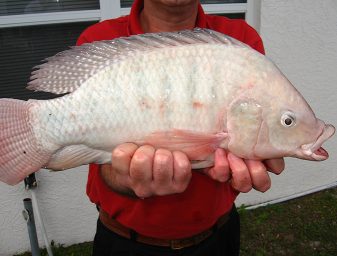
Tilapias are endemic from Africa and have been cultivated for centuries in various countries. Growing interest in their aquaculture potential has resulted in a nearly worldwide distribution of these fishes during the past seven decades.
Because of its food production and aquaculture potential, tilapias generated much enthusiasm among many developing countries during the 1950s and 1960s. In some of these nations, tilapias were used as a strategic element in the expansion of local aquaculture to produce animal protein at a relative low cost for massive consumption. In other countries, they were introduced mainly for recreation and restocking purposes.
In the 1960s and 1970s, tilapia culture shifted more towards the production of food for local consumption and for the diversification of rural activities related to agriculture and animal husbandry. During the past 30 years, many technical developments – from genetic improvement and the development of faster growing lines (tilapias are probably the most extensively domesticated aquaculture species) to improved nutritional and health management knowledge, to processing and value-adding – have allowed optimizing the tilapia production value chains, and market penetration throughout the world.
Commercial tilapia production is carried out in most countries around the world, from extreme northern and southern latitudes to the equator. The traditional markets of Asia and Africa have expanded to many countries in the Americas, Europe and elsewhere. Because of its dynamic expansion, strong marketing efforts and increasing popularity, farmed tilapia has fast become a significant substitute for traditional whitefish species from wild fisheries.
In 2016, an estimated 5.5 million metric tons (MMT) of tilapia were cultured worldwide, and this production will continue to expand significantly for many years, with forecasts for close to 5.8 MMT in 2017 and almost 6 MMT in 2018. Tilapias is one group of fishes the World Bank has forecasted will double current global production by 2030.
Most important food fish in the world
Tilapias have been referred to by Dr. Kevin Fitzsimmons, professor and tilapia expert at the University of Arizona, as the most important food fish in the world, and as the “chicken of the sea.” The suitability of tilapias as aquaculture species in essentially all types of production systems is well documented. They are very hardy fish, resistant to diseases, tolerant to overcrowded production conditions and various environmental stressors.
Different species and lines can grow well in waters that range from freshwater to essentially seawater. They have high yield potential and many species can be raised using feeds primarily based on proteins of vegetable origin. In many areas, tilapia farming is an important activity that produces needed protein, generates employment and hard foreign currency, and provides an opportunity to diversify local production with a new commodity.
Tilapia production strategies go from the very simple ones (small earthen ponds) to those involving very complex techniques including recirculating systems. Simple strategies are those characterized by little control over water quality and nutritional value of the food supply and by low fish yields, and, as greater control is developed and implemented over water quality, fish nutrition, the cost and yield per unit area or volume also increase.
In the progression from low to high management intensity, tilapia production systems can be described as extensive, semi-intensive and intensive, each characterized by a distinct change in the level of investment, operating costs, degree of management input, control, risk and yield.

Extensive production systems
Extensive tilapia culture is typically a subsistence activity, with small earthen ponds managed by families or small communities. Most production is typically consumed by the family or community, with a small proportion sold locally. This makes it difficult to get accurate production statistics for extensive systems. Management of these systems often involves all family members, and technical assistance is sometimes provided by the local and/or central government.
Male and female fish are commonly cultured together, with very low stocking densities (1,000-2,000 fish/hectare), and the fish feed only on natural pond productivity, plankton and detritus in the water and soil. Supplemental feed is almost never used in this type of system. Yields range from 300 to 700 kg/ha per crop. In most developing countries, this type of producer has very limited access to technology, information, markets and credit.

Semi-intensive production systems
A semi-intensive system involves larger ponds of up to several hectares and is typically labor intensive, with aquaculture activities often carried out in combination with other agricultural or animal husbandry activities. Fish are grown in two to three phases in smaller ponds or tanks, to progressively larger sizes until stocking into the large ponds for final growout to market size. The natural productivity of ponds is increased through animal manuring, thus helping keep production costs down.
In many developing countries, manuring is widely used for fish production, resulting in yields that range from 2,000 to 6,000 kg/ha per crop, using initial stocking densities of 5,000 to 20,000 fish/ha. Inorganic fertilizers are also used to increase the natural productivity of the ponds, promoting large algal blooms. Nutritionally incomplete agricultural byproducts are sometimes used as supplemental feeds to promote production, and commercial feeds are also often used.
In several countries, production of male and female tilapia in the same pond is still commonly done, and the small size fish produced typically are sold in local markets. However, monosex culture of male tilapia is preferred because domestic and international markets prefer a larger fish. The only disadvantage of male monosex culture is that females are discarded. In some countries, semi-intensive producers are establishing cooperatives to achieve the necessary volumes and standardize the quality of the product – in terms of the color and size for whole fish, and the size and thickness for fillets – for export markets like the United States.
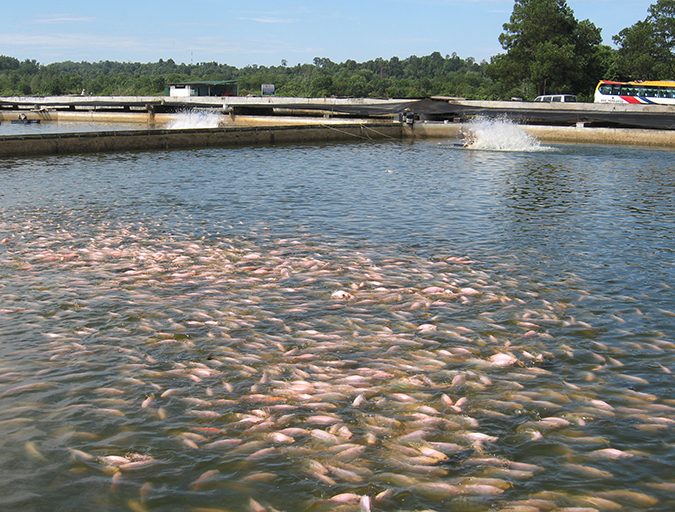
Intensive production systems
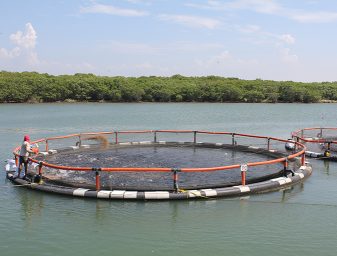
Outdoor ponds and cages, and outdoor and indoor tanks and raceways are used to grow tilapia intensively. Stocking densities in intensive systems range between 10,000 and 35,000 fish or more per hectare. Fish are fed high-quality commercial aquafeeds, and natural productivity plays a diminished reduced role although feed conversion efficiency is improved with good plankton blooms.
Biological, chemical and physical parameters are monitored and controlled (when possible) frequently to adjust and respond to any undesirable emergency (i.e., low dissolved oxygen levels). Compared to the semi-intensive system, the higher cost of feed increase is amply compensated by greater yields (5,000 to 20,000 kg or more/ha/crop). Tank and raceway systems can be integrated with hydroponic production of a variety of herbs, vegetables and fruits. In these aquaponic systems, nutrients from the fish system are used to support the plant production.
Intensive cages are a popular production method used in Asia and Latin America. The stocking rate recommended depends on the cage volume, desired harvest size and production level. Cage culture offers several important advantages. The breeding cycle of tilapia is disrupted, and therefore mixed-sex populations can be reared in cages without the typical problems of recruitment and stunting.
Cages are production units easily managed and with relatively low harvesting costs. The fish can be treated as soon as any diseases of parasites are detected, and cages require a relatively lower capital investment when compared to ponds. Some disadvantages include a higher risk of loss from poaching, fishes become less tolerant to poor water quality, and are totally dependent on nutritionally complete feeds. Tank culture of tilapia is a good alternative to pond and cage culture if sufficient water or land is not available. Many of the advantages and disadvantages that apply to cage culture also apply to tank culture.
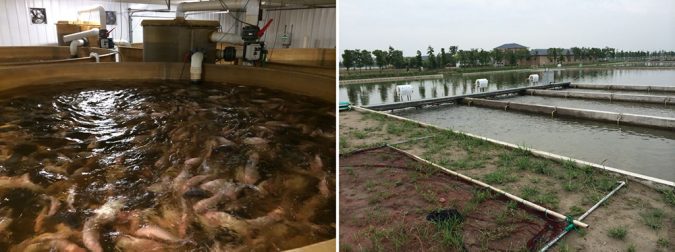
Perspectives
Tilapias are the second-most important aquaculture species in the world today, after the carps, with a global production that surpasses those of salmonids and various catfishes. With few exceptions, tilapias are farmed to some extent in most countries, and their production technology continues to expand.
The potential of tilapia the tilapia industry for strong and sustained growth and expanding markets throughout the world mean that tilapia aquaculture will continue to expand significantly in the future, as a growing human population and need for increased food production place more demand on industries like aquaculture.
Authors
-

Cesar C. Alceste, M.Sc.
Consultant
Tilapia Production, Processing & Marketing
Miami, FL USA
[109,111,99,46,108,111,97,64,101,116,115,101,99,108,97,117,113,97]
-

Darryl E. Jory, Ph.D.
Editor Emeritus
Global Aquaculture Alliance[103,114,111,46,101,99,110,97,105,108,108,97,97,103,64,121,114,111,106,46,108,121,114,114,97,100]
Tagged With
Related Posts
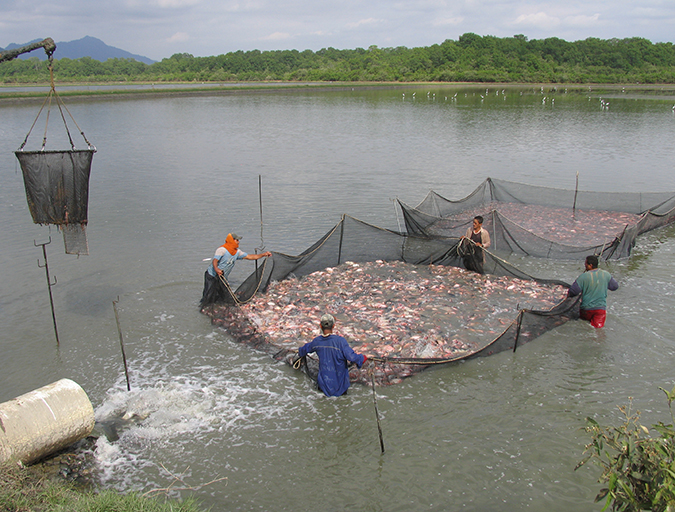
Responsibility
Addressing safety in Latin America’s tilapia supply chain
Over the last decade, the experience gained by many tilapia farmers combined with proficient programs implemented by local governments have significantly improved tilapia production in various Latin American countries like Colombia, Mexico, Ecuador and other important tilapia producers in the region.
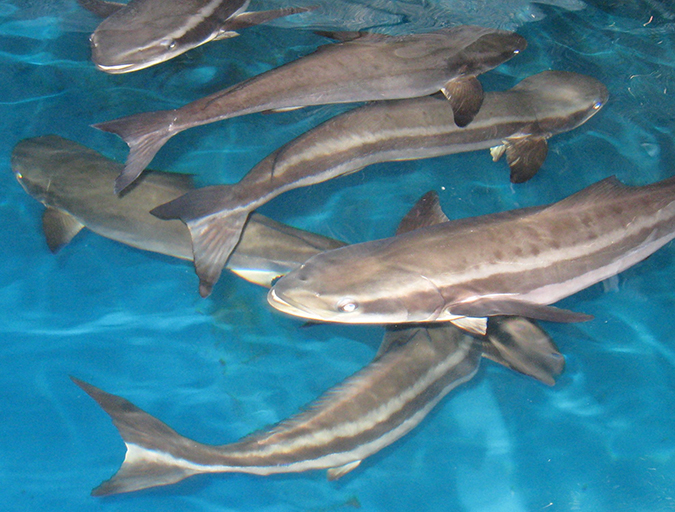
Intelligence
Global Farmed Finfish Production Outlook: Slower-paced growth
The GOAL 2016 survey for global production of farmed fish shows that most major finfish groups increased their farmed production in 2015. The total production of species and countries covered by the survey is forecasted to reach 42 MMT in 2016.
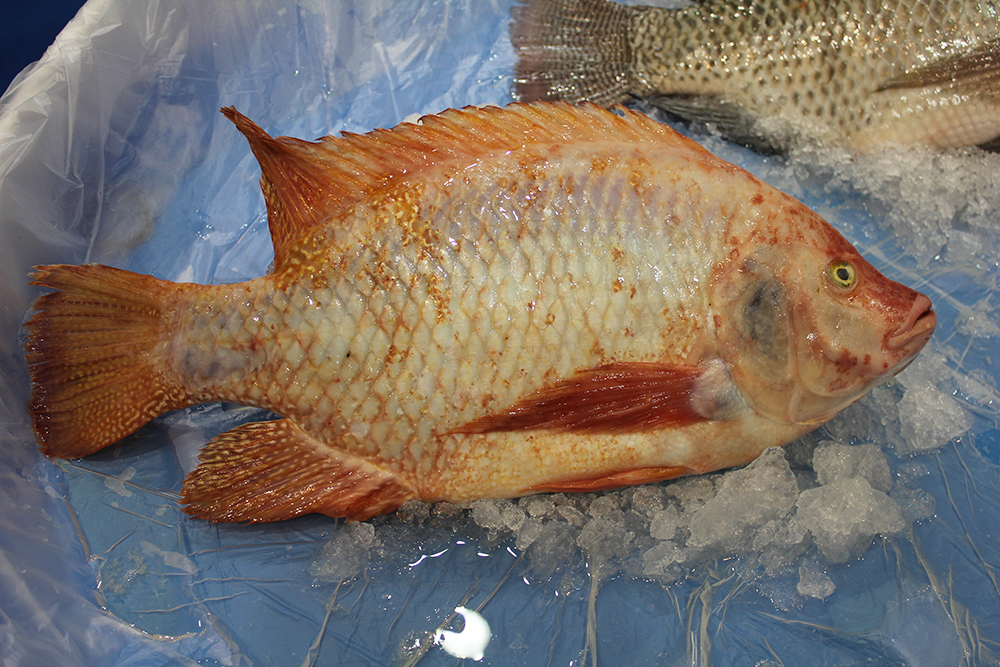
Intelligence
Adding value to tilapia to tap into U.S. market
New markets for tilapia and expansion of existing ones can be created by planning and implementing properly designed geographic strategies to meet discriminating consumer preferences. Low labor costs in most producing countries promotes value-adding by the production of fresh fillets.
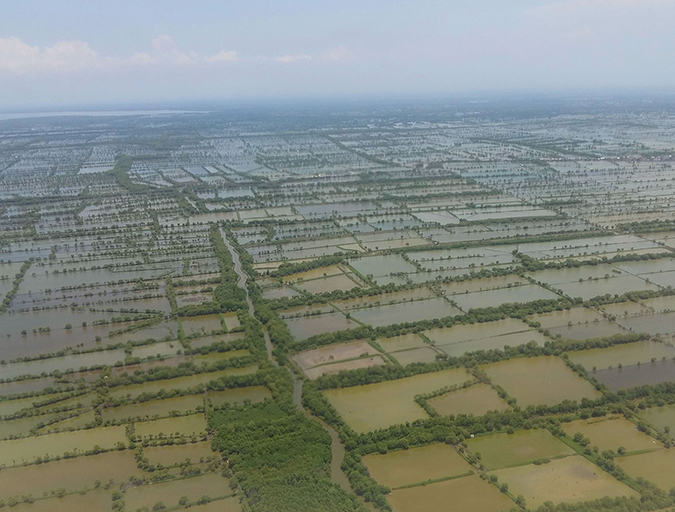
Responsibility
Opinion: Aquaculture’s way forward is to embrace zonal management
The idea that fish farms’ health and safety are interconnected is not new. Even the best-run farms are not protected from diseases or pollution from another farm close by, so further measures are necessary, argues Anton Immink of Sustainable Fisheries Partnership.
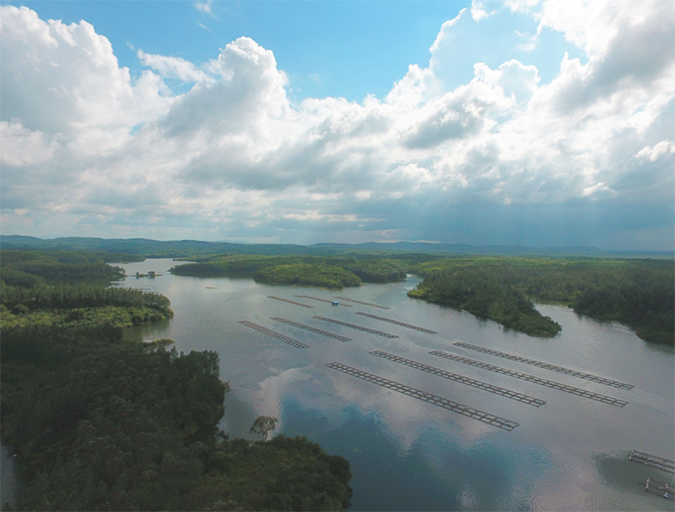
Intelligence
What will it take to make tilapia great again?
Once a darling of the sustainable seafood crowd for its vegetarian diet and potential to feed the world’s growing population, mild-mannered tilapia now has an image problem that may be causing a dip in consumption levels.

